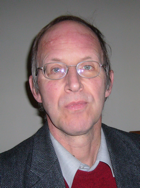Professor Bert de Vries
Bert de Vries has a background in Theoretical Chemistry. He was a co-founder of the Institute for Energy and Environment (IVEM) at the University of Groningen, where he received his Ph.D. on sustainable resource use. Since 1990 he has been a senior scientist at the Netherlands Environmental Assessment Agency (MNP) of the National Institute of Public Health and Environment (RIVM). Since January 2003 Bert has been a Professor of Global Change and Energy at the Copernicus Institute.
Bert’s research expertise is in resource and in particular energy analysis, modelling and policy; climate and global change modelling; and modelling for sustainable development. He co-edited several books, including a publication on a Global Change model (TARGETS) and one on 10000 years of socio-ecological history (Mappae Mundi).
His interest and involvement in the GSD-project is in two ares. First, the area of complex systems modelling, in particular agent-based simulation and network dynamics, with applications in the field of energy/resource and climate modelling. Secondly, a related activity is to make economy-energy-climate models more transparant and available for use via internet, and to design a multi-use platform on which such models can be used interactively in order to explore social dilemma situations, in common pool resource management (such as climate).
Papers:
Presented at the Complex Systems Conference, Shanghai in February 2009:
 Networks that optimize a trade-off between efficiency and dynamical resilience
Networks that optimize a trade-off between efficiency and dynamical resilience
An MSc thesis produced by Chris Roorda, a student of Bert de Vries, on a simple economy-energy-climate model to explore long-term feedbacks:
 The SUSCLIME model: Exploring adjustment of behaviour to climate change and resource depletion
The SUSCLIME model: Exploring adjustment of behaviour to climate change and resource depletion
To contact any GSD partner, please email the GSD Project Administrator, Elizabeth Hancock – elizabeth.hancock[at]ucl.ac.uk
| Global System Dynamics and Policies is a project funded by the Future & Emerging Technologies division of the European Commission. The project began in May 2008, and will continue until April 2010 |




